#Braiding Sweetgrass
Text
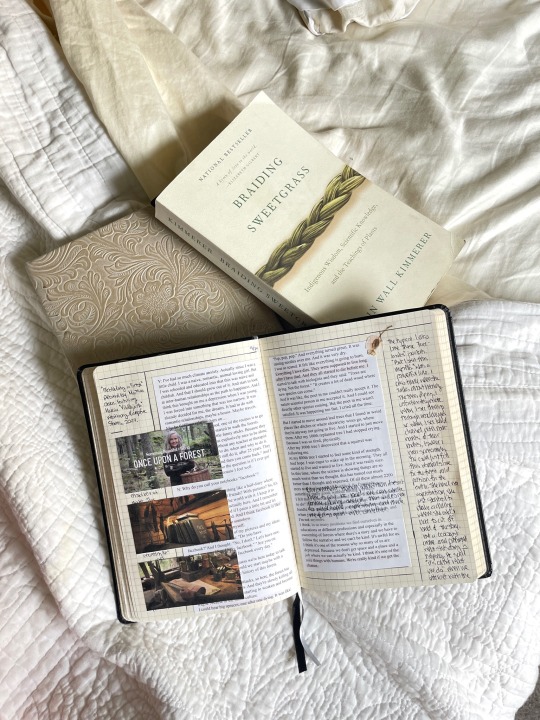
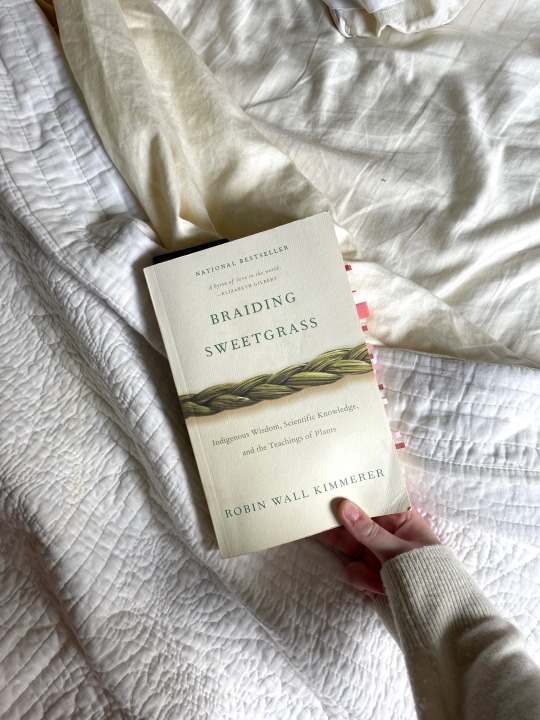
been thinking about love letters to nature
#personal#mine#currently reading#current read#journaling#journal spreads#journal ideas#braiding sweetgrass#common place journal#commonplace ideas#commonplace#commonplacing#common place book#commonplace journal#commonplace book#nature#forestcore#forest witch#journaling inspo#journaling community#studyblr
27 notes
·
View notes
Text
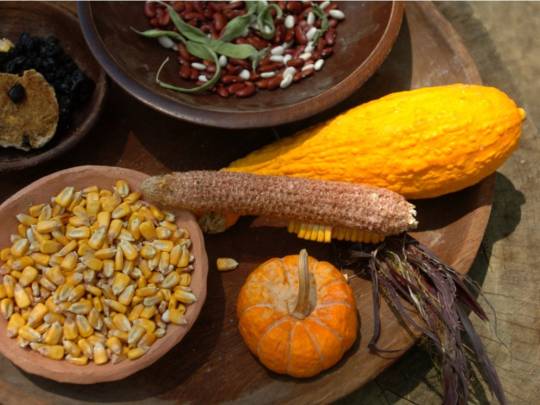

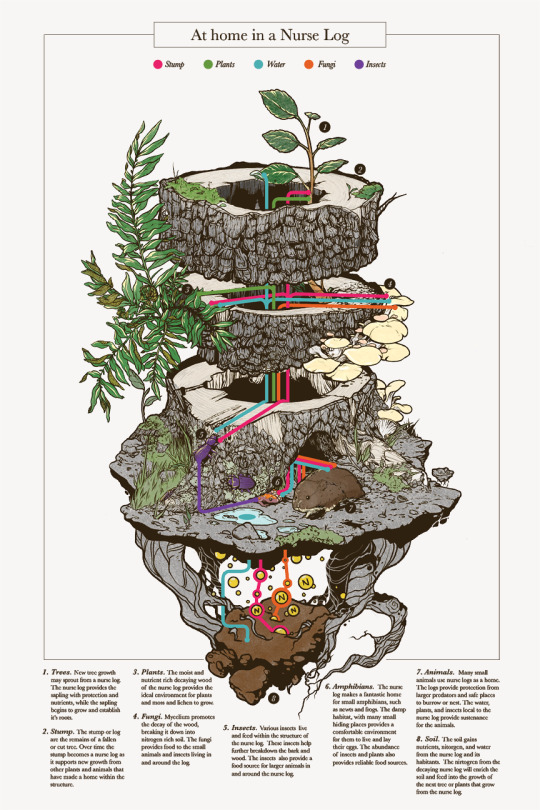
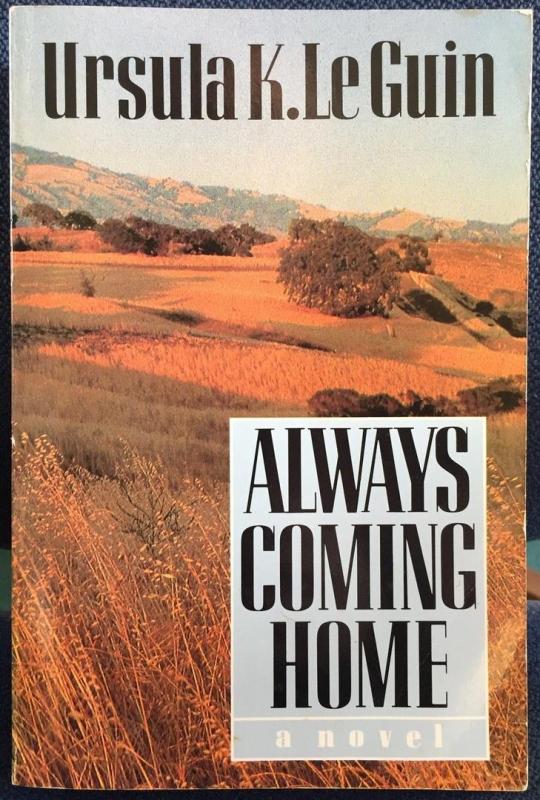


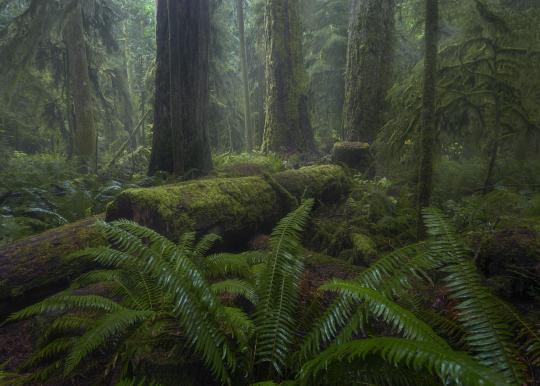
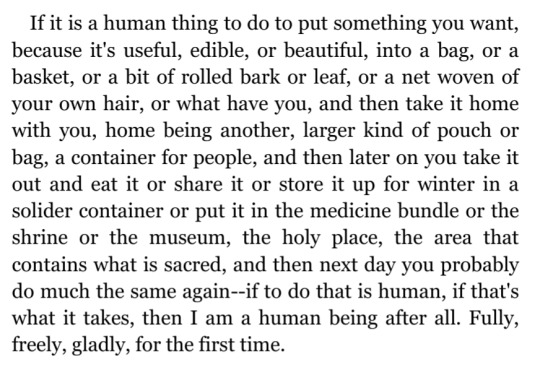
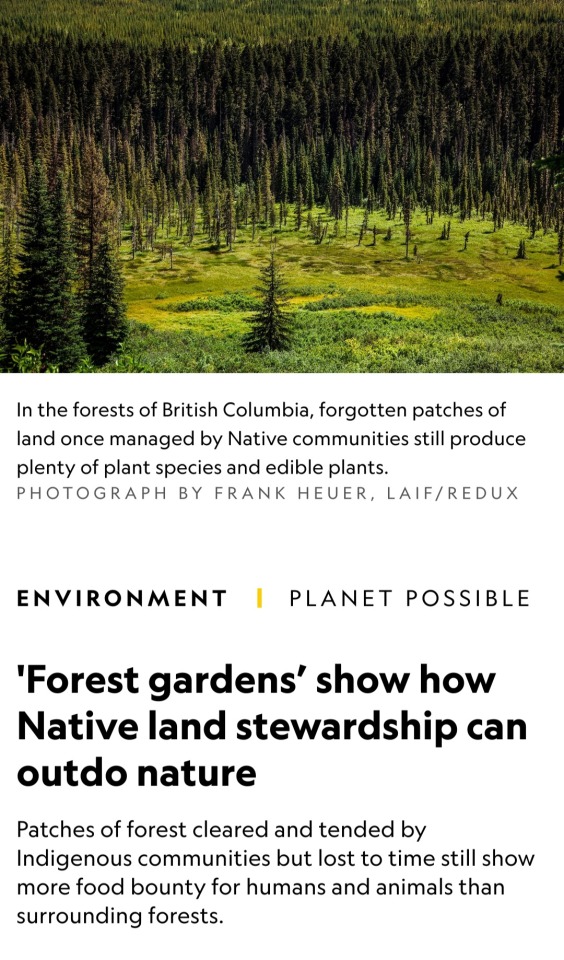

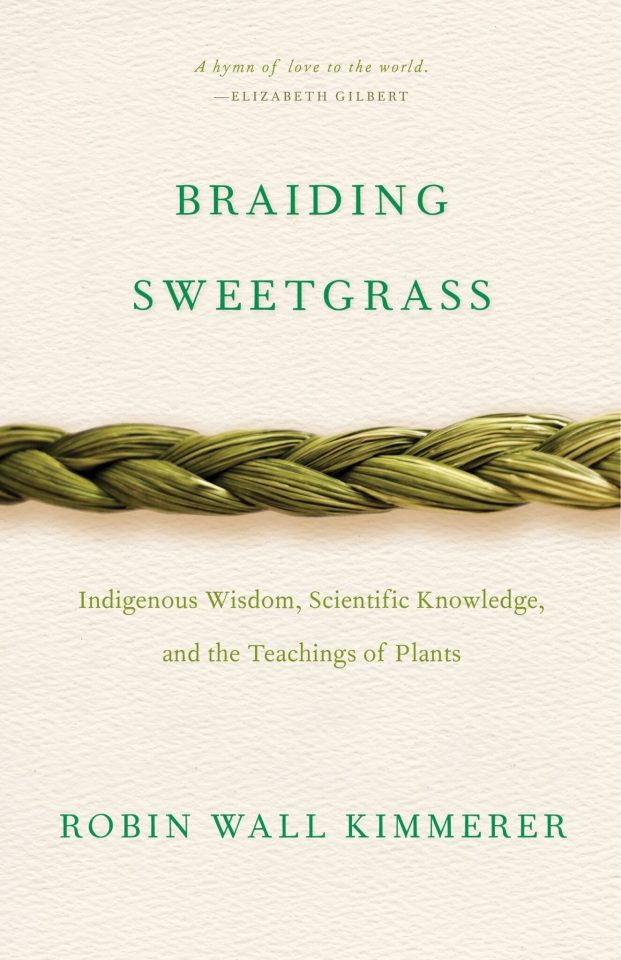
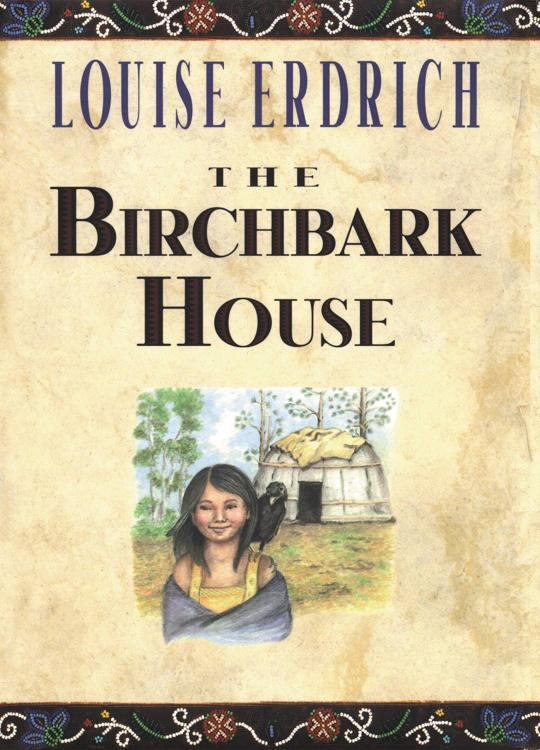

times, places, and practices that I want to learn from to imagine a hopeful future for humanity 🍃
the three sisters (squash, beans, maize) stock photo - alamy // anecdote by Ira Byock about Margaret Mead // art by Amanda Key // always coming home by Ursula K. Le Guin // Yup'ik basket weaver Lucille Westlock photographed by John Rowley // the left hand of darkness by Ursula K. Le Guin // photo by Jacob Klassen // the carrier bag theory of fiction by Ursula K. Le Guin // article in national geographic // the dawn of everything by David Graeber and David Wengrow // braiding sweetgrass by Robin Wall Kimmerer // the birchbark house by Louise Erdrich // photo by John Noltner
I'm looking for more content and book recs in this vein, so please send them my way!
#solarpunk#hopepunk#braiding sweetgrass#just a collection of books and pictures that make me hopeful for the future#margaret mead#robin wall kimmerer#nature#ursula k le guin#ursula k. le guin#the left hand of darkness#the carrier bag theory of fiction#the dawn of everything#anthropology#future#hopecore#native plants#biodiversity#sustainability#eco#eco friendly#louise erdrich#civilization
2K notes
·
View notes
Text
x
He listened to and enjoyed Potawatomi Nation teachings and died saying Free Palestine. He will be in indigenous history and prayers a long time.
Please read/listen to Braiding Sweetgrass. It's a wonderfully poetic read and additionally an amazing book to add to your decolonial reading list.
#yall i am sobbing that this man had so much allyship and love and patience for indigenous communities#aaron bushnell#braiding sweetgrass#Potawatomi Nation#Robin Wall Kimmerer
958 notes
·
View notes
Text
Note to new foragers;
while you are learning about the species you want to harvest, also learn what sustainable harvesting looks like. Learn about invasive species management, and agroecology. A lot of people start with the book Braiding Sweetgrass, by Dr Robin Wall Kimmerer. It is approachable, and covers the Honorable Harvest really well. The Poor Proles Almanac podcast and Substack are both incredible sources of information as well.
In general, tho, you should start by knowing this:
- If a species is native, and especially if it is rare on the landscape, do what you can to encourage it. Don’t over harvest, clear away invasives around it, save and spread its seeds. Maybe even hand pollinate it if needed.
- If a species is not native, feel free to harvest much more of it. Discourage its spread, but you don’t necessarily need to remove every single one you see. For a very small select few non native species, a little bit of spreading can even be okay. But be sure you know what you are doing. In general, it is better to remove a non native species than to let it stay. Keep native seeds on you to replace them with. I carry around little dime bags of seeds.
- if a species is Invasive (not native & choking out native species) remove as much as you can without damaging the local ecology. For foraging this might mean you harvest a ton of yellow charlock, even more than you need, because you see it choking out wild lettuce. This is a good thing to do (at least where I am). Because the charlock will overtake everything. But if you start managing in other ways, like tarping or tilling or spraying, keep in mind that oftentimes the medicine can be worse than the disease. If you spray a field of charlock you don’t get wild lettuce, you get more charlock.
Anyways, good luck!
408 notes
·
View notes
Text
"what would it be like, I wondered, to live with that heightened sensitivity of the lives given for ours? To consider the tree in the Kleenex, the algae in the toothpaste, the oaks in the floor, the grapes in the wine; to follow back the thread of life in everything and pay it respect? Once you start, it's hard to stop, and you begin to feel yourself awash in gifts."
-Robin Wall Kimmerer, Braiding Sweetgrass
867 notes
·
View notes
Text
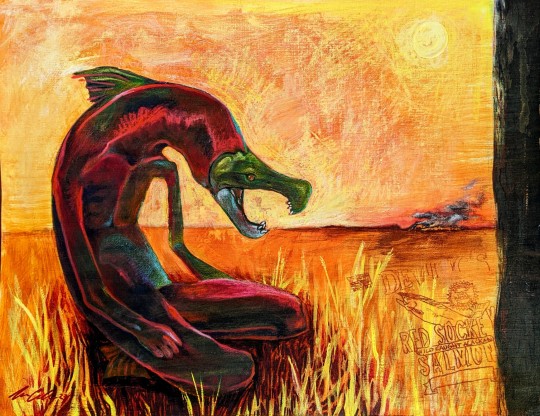
"Orphan" 11"x14" acrylic, paint pen, colored pencil, wax pastel, and conte crayon on paper
Brought to you by grief and climate anxiety 🔥
#art#traditional art#acrylic#animal art#painting#primitive wiggles#mixed media#naive art#anthropomorphic#sockeye salmon#sockeye#salmon#grief#braiding sweetgrass#ecology#climate grief
761 notes
·
View notes
Text

Robin Wall Kimmerer, Braiding Sweetgrass
318 notes
·
View notes
Text

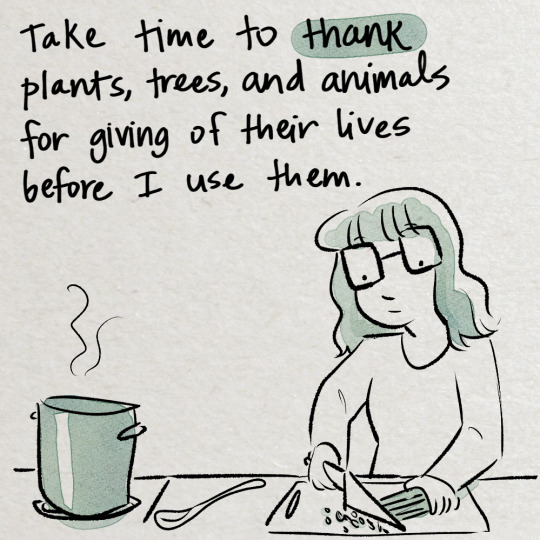



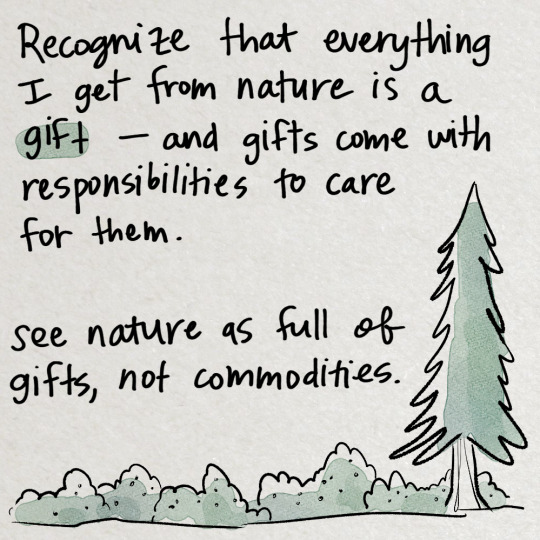
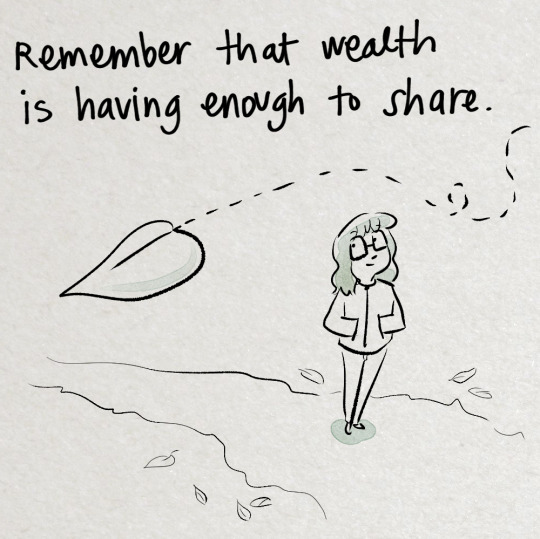
What I've been reading: nonfiction edition. I'm still digesting "Braiding Sweetgrass" by Robin Wall Kimmerer, and I know it's a book I will return to again. There is a lot to savor here for a more peaceful and interconnected relationship with the world. I highly recommend it, especially this time of year when there is so much focus on buying and spending.
286 notes
·
View notes
Text
"In the Western tradition there is a recognized hierarchy of beings, with, of course, the human being on top--the pinnacle of evolution, the darling of Creation--and the plants at the bottom. But in Native ways of knowing, human people are often referred to as "the younger brothers of Creation." We say that humans have the least experience with how to live and thus the most to learn--we must look to our teachers among the other species for guidance. Their wisdom is apparent in the way that they live. They teach us by example. They've been on the earth far longer than we have been, and have had time to figure things out."
-Braiding Sweetgrass, Robin Wall Kimmerer
4K notes
·
View notes
Text
On animism
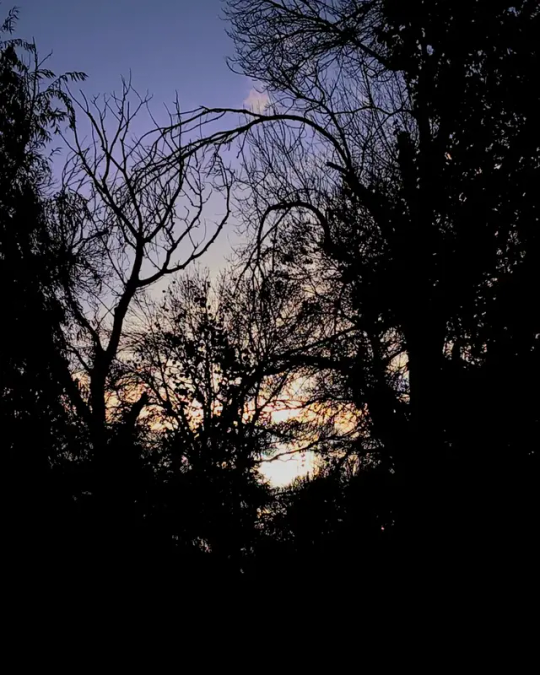
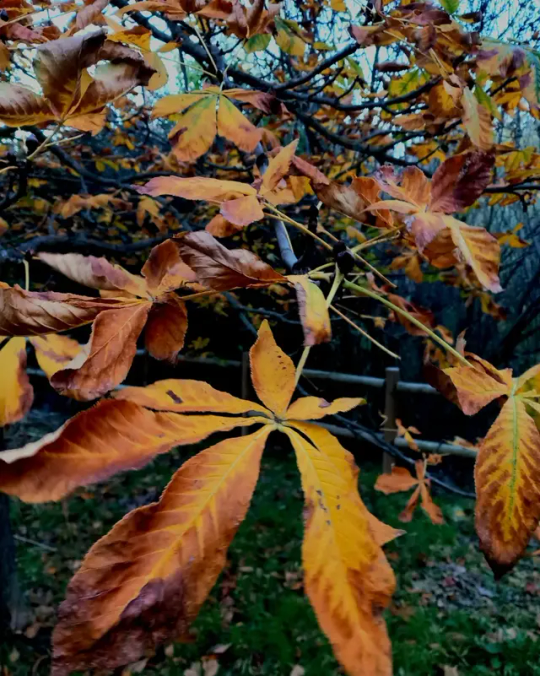
One of my teachers at university told us something today, that I believe to be relevant to animism and therefore also witchcraft:
He explained that in the West we see everything as occurences, whereas in some languages the same happenings are described as actions. Meaning that in the West we tend to imply that there is no agency involved in whatever happens, while some other languages tend to imply that someone activily causes things. His example was that in the West rain is understood as something that just happens, no one causes the rain. Whereas in Mesoamerica it was believed that it rained because some god was crying.
While the idea of a literal crying god causing it to rain on earth might be outdated, I find it really interesting how these two perspectives - events vs. actions - might shape our relationship with the world. If rain is not just an occurence, but someone acting with agency, rain becomes another part of the community we live in. The community then doesn't only consist of humans anymore, but of everything that surrounds us. Suddenly there are all these new players that actively affect your life with their actions. Other-than-human persons that you can interact with and with whom you have to keep a friendly relationship. If the tree in front of your house isn't just an object, but a being with agency, you actually have to be at least respectful and might even want to build a relationship with them, get to know them, learn from them.
I think that's really the core of animism. Descriptions of animism are often reduced to the believe that everything has a soul, but I think believe doesn't even factor into it. You don't need to believe that there is a non-physical aspect to rain, mountains, stones. It's about how we interact with them. I don't even have to ask myself the question if the tree in front of my house has a soul in order to learn about and from them or to interact with them. In my opinion animism is something that is done, not thought or believed. It's a perspective.
Listening to my teacher also reminded me of the following part of Braiding Sweetgrass (great book btw) which explains all this really well:
A bay is a noun only if water is dead. When bay is a noun, it is defined by humans, trapped between its shores and contained by the word. But the verb wiikwegamaa - to be a bay - releases the water from bondage and lets it live. "To be a bay" holds the wonder that, for this moment, the living water has decided to shelter itself between these shores, conversing with cedar roots and a flock of baby mergansers. Because it could do otherwise become a stream or an ocean or a waterfall, and there are verbs for that, too. To be a hill, to be a sandy beach, to be a Saturday, all are possible verbs in a world where everything is alive. Water, land, and even a day, the language a mirror for seeing the animacy of the world, the life that pulses through all things, through pines and nuthatches and mushrooms. This is the lan- guage I hear in the woods; this is the language that lets us speak of what wells up all around us.
[...]
This is the grammar of animacy. [...] In English, we never refer to a member of our family, or indeed to any person, as it. That would be a profound act of disrespect. It robs a person of selfhood and kinship, reducing a person to a mere thing. So it is that in Potawatomi and most other indigenous languages, we use the same words to address the living world as we use for our family. Because they are our family.
To whom does our language extend the grammar of animacy? Naturally, plants and animals are animate, but as I learn, I am discovering that the Potawatomi understanding of what it means to be animate diverges from the list of attributes of living beings we all learned in Biology 101. In Potawatomi 101, rocks are animate, as are mountains and water and fire and places. Beings that are imbued with spirit, our sacred medicines, our songs, drums, and even stories, are all animate. The list of the inanimate seems to be smaller, filled with objects that are made by people.
[...]
The language reminds us, in every sentence, of our kinship with all of the animate world.
- Robin Wall Kimmerer, Braiding Sweetgrass: Indigenous Wisdom, Scientific Knowledge and the Teachings of Plants (2013), p. 78-80.
#animism#witchcore#witch blog#witchcraft#witch books#braiding sweetgrass#witchy#folk witchcraft#folk magic#plant witch#bookblr#bookish#booklr#studyblr#animist
297 notes
·
View notes
Text
Your strange hunger for ease should not mean a death sentence for all of creation.
- Robin Wall Kimmerer, Braiding Sweetgrass
301 notes
·
View notes
Text
The land knows you, even when you are lost.
Robin Wall Kimmerer, Braiding Sweetgrass
#book quotes#literature#nature quotes#braiding sweetgrass#robin wall kimmerer#walking in nature#nature#books and libraries
478 notes
·
View notes
Text

One of my favorites.
83 notes
·
View notes
Text
In those childhood fields, waiting for strawberries to ripen, I used to eat the sour white ones, sometimes out of hunger but mostly from impatience. I knew the long-term results of my short-term greed, but I took them anyway. Fortunately, our capacity for self-restraint grows and develops like the berries beneath the leaves, so I learned to wait. A little. I remember lying on my back in the fields watching the clouds go by and rolling over to check the berries every few minutes. When I was young, I thought the change might happen fast. Now I am old and I know that transformation is slow. The commodity economy has been here on Turtle Island for four hundred years, eating up the white strawberries and everything else. But people have grown weary of the sour taste in their mouths. A great longing is upon us, to live again in a world made of gifts. I can scent it coming, like the fragrance of ripening strawberries rising on the breeze.
— Braiding Sweetgrass, Robin Wall Kimmerer
99 notes
·
View notes
Text
"the land knows you even when you get lost" i will never recover from this
83 notes
·
View notes
Text
"Naturalist E. O. Wilson writes, “There can be no purpose more
inspiring than to begin the age of restoration, reweaving the wondrous diversity of life that still surrounds us.” The stories are piling up all around in scraps of land being restored: trout streams reclaimed
from siltation, brownfields turned into community gardens, prairies reclaimed from soybeans, wolves howling in their old territories, schoolkids helping salamanders across the road. If your heart isn’t raised by the sight of whooping cranes restored to their ancient flyway, you must not have a pulse. It’s true that these victories are as small and fragile as origami cranes, but their power moves as inspiration. Your hands itch to pull out invasive species and replant the native flowers. Your finger trembles with a wish to detonate the explosion of an obsolete dam that would restore a salmon run. These are antidotes to the poison of despair."
-Robin Wall Kimmerer, Braiding Sweetgrass
748 notes
·
View notes